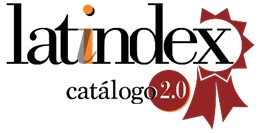Passo a passo: simplificando e matematizando o mundo real com o MathCityMap
DOI:
https://doi.org/10.48489/quadrante.23604Palavras-chave:
modelação, matemática em espaços exteriores, ferramentas digitais, MathCityMap, autenticidade, validaçãoResumo
A modelação matemática precisa de ser ensinada em contextos reais. Neste artigo, examinamos o potencial das tarefas que são resolvidas em espaços exteriores, usando a ferramenta digital MathCityMap, para aprender o processo de modelação matemática passo a passo. Do ponto de vista teórico, pode supor-se que estas tarefas têm potencial para impulsionar as etapas “Simplificar/Estruturar” e “Matematizar” de uma forma autêntica. Além disso, presume-se que a ferramenta MathCityMap apoia o processo de modelação por meio de pistas e favorece a validação da solução. Num estudo de caso, comparamos tarefas resolvidas em espaços exteriores com as mesmas tarefas, mas resolvidas na sala de aula, para averiguar até que ponto essas considerações teóricas podem ser confirmadas na prática com o uso do sistema. Os resultados mostram que as tarefas resolvidas em espaços exteriores provocam fortemente a ocorrência da etapa de Simplificar/Estruturar e aumentam a exigência de trabalhar, com a maior precisão possível, na escolha de um modelo e no controlo de erros. Adicionalmente, o sistema MathCityMap permite apoiar, através de pistas, a escolha de um modelo exato, ainda que simplificado, além de fomentar a validação da resposta, mostrando ter potencial para levar os alunos a rever os passos do ciclo de modelação.
Referências
Ärlebäck, J., & Albarracín, L. (2019). An extension of the MAD framework and its possible implication for research. In U. Jankvist, M. Van den Heuvel-Panhuizen, & M. Veldhuis (Eds.), Proceedings of the Eleventh Congress of the European Society for Research in Mathematics Education (pp. 1128-1135). Freudenthal Group & Freudenthal Institute, Utrecht University and ERME.
Barbosa, A., & Vale, I. (2020). Math trails through digital technology: An experience with pre-service teachers. In M. Ludwig, S. Jablonski, A. Caldeira, & A. Moura (Eds.), Research on Outdoor STEM Education in the digiTal Age (pp. 47-54). WTM.
Blane, D., & Clarke, D. (1984). A Mathematics trail around the city of Melbourne. Monash Mathematics Education Centre.
Blum, W., & Leiß, D. (2007). How do students and teachers deal with mathematical modelling problems? In C. Haines, P. Galbraith, W. Blum, & S. Khan (Eds.), Mathematical modelling. Education, engineering and economics (pp. 222–231). Horwood.
Blum, W., Galbraith, P., Henn, H.-W., & Niss, M. (2007). Modelling and applications in mathematics education: The 14th ICMI study. Springer.
Borromeo-Ferri, R. (2006). Theoretical and empirical differentiations of phases in the modelling process. ZDM–The International Journal on Mathematics Education, 38(2), 86–95. https://doi.org/10.1007/BF02655883
Buchholtz, N. (2017) How teachers can promote mathematising by means of mathematical city walks. In G. Stillman, W. Blum, & G. Kaiser (Eds.), Mathematical modelling and applications (pp. 49-58). Springer.
Carreira, S., & Baioa, A. (2017). Creating a color palette: The model, the concept, and the mathematics. In T. Dooley, & G. Gueudet (Eds.), Proceedings of the Tenth Congress of the European Society for Research in Mathematics Education (pp. 916-923). DCU Institute of Education and ERME.
Greefrath, G., Kaiser, G., Blum, W., & Borromeo Ferri, R. (2013). Mathematisches modellieren – Eine einführung in theoretische und didaktische hintergründe. In R. Borromeo Ferri, G. Greefrath, G. Kaiser (Eds.), Mathematisches modellieren für schule und hochschule (pp. 11-38). Springer.
Greefrath, G., & Siller, S. (2017). Modelling and simulation with the help of digital tools. In G. Stillman, W. Blum, & G. Kaiser (Eds.), Mathematical modelling and applications (pp. 529-539). Springer.
Hankeln, C. (2020). Validating with the use of dynamic geometry software. In G. Stilman, G. Kaiser & C. Lampen (Eds.), Mathematical modelling education and sense-making (pp. 277-285). Springer.
Herget, W., & Torres-Skoumal, M. (2007). Picture (im)perfect mathematics! In W. Blum, P. Galbraith, H.-W. Henn, & M. Niss (Eds.). Modelling and applications in mathematics education (pp. 379-386). Springer.
KMK (2015). Bildungsstandards im fach mathematik für die allgemeine hochschulreife. Schneckenlohe. Appel & Klinger.
Ludwig, M., & Jablonski, S. (2019). Doing math modelling outdoors – A special class activity designed with MathCityMap. In Proceedings of the 5th International Conference on Higher Education Advances, Valéncia, Spain. http://dx.doi.org/10.4995/HEAd19.2019.9583
Ludwig, M., & Jesberg, J. (2015). Using mobile technology to provide outdoor modelling tasks - The MathCityMap-Project. In Procedia – Social and Behavioral Sciences (Proceedings of the 6th WCES), 191, 2776-2781. https://doi.org/10.1016/j.sbspro.2015.04.517
Ludwig M., & Reit, X.-R. (2013). A cross-sectional study about modelling competency in secondary school. In G. Stillman, G. Kaiser, W. Blum, & J. Brown (Eds.), Teaching mathematical modelling: Connecting to research and practice (pp. 327-337). Springer.
Ludwig, M., Jesberg, J., & Weiß, D. (2013). MathCityMap – eine faszinierende belebung der idee mathematischer wanderpfade. Praxis der Mathematik, 53, 14–19.
Reit, X.-R. (2017). Towards an empirical validation of mathematics teachers' intuitive assessment practice exemplified by modelling tasks. In T. Dooley, & G. Gueudet (Eds.), Proceedings of the Tenth Congress of the European Society for Research in Mathematics Education (pp. 3588-3595). DCU Institute of Education and ERME.
Rosa, M., & Orey, D. (2017). Ethnomodelling as the mathematization of cultural practices. In G. Stillman, W. Blum, & G. Kaiser (Eds.), Mathematical modelling and applications. Crossing and researching boundaries in mathematics education (pp. 153-162). Springer. https://doi.org/10.1007/978-3-319-62968-1_13
Vos, P. (2015). Authenticity in extra-curricular mathematics activities: Researching authenticity as a social construct. In G. Stillmann, W. Blum, & M. Biembengut (Eds.), Mathematical modelling in education research and practice: Cultural, social, and cognitive influences (pp. 105–113). Springer. https://doi.org/10.1007/978-3-319-18272-8_8
Zender, J., Gurjanow, I., Cahyono, A., & Ludwig, M. (2020). New studies in mathematics trails. International Journal of Studies in Education and Science, 1(1), 1-14.










